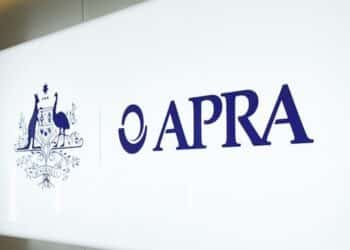Presenting to investor E&P Financial Group on Thursday, Count Financial owner CountPlus revealed the licensee’s adviser numbers had dropped to 253 as of the end of May, down from 315 in October 2019.
CountPlus said “almost half of the original adviser cohort”, totalling 85 advisers, had retired or ceased providing advice in that time as the group fell victim to the adviser exodus. Over the 18-month period the group had added 107 advisers, with 61 switching licensees and 17 employed advisers changing practices.
A further five advisers were removed as they had been deemed a compliance risk, CountPlus said.
Over the same period, despite the adviser losses the group’s gross business earnings had improved from just under $58 million in October 2019 to $71 million at the end of May this year, with the new adviser additions amounting to $31 million in gross earnings.
Departing advisers had stripped over $15 million from the group’s gross earnings over the 18-month period, while it had lost almost $2.5 million as a result of the ban on grandfathered commissions, which came in at the beginning of 2021 as a result of royal commission recommendations.
“Count Financial is seeking to enhance its business by servicing high quality, sustainable advice firms,” CountPlus said in the presentation.
“Firms that fit this profile demonstrate a client-centric approach, a strong focus on delivering quality advice to their clients and have invested in support infrastructure.”
The group said it had a pipeline of 73 firms waiting to join Count Financial, with four firms currently being onboarded.
It noted that the offboarding times for some dealer groups had “stretched from 30 days to 120 days – this impacts Count Financial in the timing from when an adviser agrees to join Count Financial and when they onboard”.
Around 85 per cent of Count’s advisers had already passed the FASEA exam, and 60 per cent had less than two study units to complete to be compliant with the education standard, the group said.
Meanwhile, Count noted it had raised a provision of $252 million related to “historical conduct” within the dealer group, in addition to the $300 million indemnity provided by CBA when the licensee had been purchased by CountPlus.
“The total payment against the CBA indemnity was $4.9 million at 31 May 2021,” CountPlus said.




Surely earnings should be better defined.. Listed AFSLs should not be allowed to classify revenue earned before payments to underlying firms as ‘Earnings’. Net Revenue is a better yardstick. CAF, Easton and Sequioa all pull the same nonsense to mislead their shareholders.
Gross earnings of $71 million – what are the net earnings. Presumably this is just turnover with some 80-90% going to the advisers plus CountPlus overheads, leaving a fraction. With 253 advisers and $71 million we are talking under $300k turnover per adviser which is realistic.
However, the alarming part is that the firm makes maybe $0-$10 million in profit per year but has a $252 million provision against historical conduct. How are the directors of the company contemplating to pay this provision as and when it falls due?
I think that the CBA is on the hook for the remediation provisions.
The bigger issue for existing Count firms is the deals being done to get new firms on board. Seems like it’s back to the bad ol’ days of waiving fees to win the business, which is just the same as writing a big sign-on cheque….not conflicted remuneration at all… given their background, it’s no surprise that like the banks they’re offering special deals for new ‘customers’ that existing customers cant get….wouldnt be happy Jan….(or matthew as the case may be)…
Yes, I would have thought so but the article specifically says the provision is in addition to the CBA indemnity. Does that mean it is for advisers that did not come via the CBA route, i.e. for which CountPlus is liable? If not, what is the contingency for their non-CBA sourced advisers?
Indemnified by CBA isn’t it?